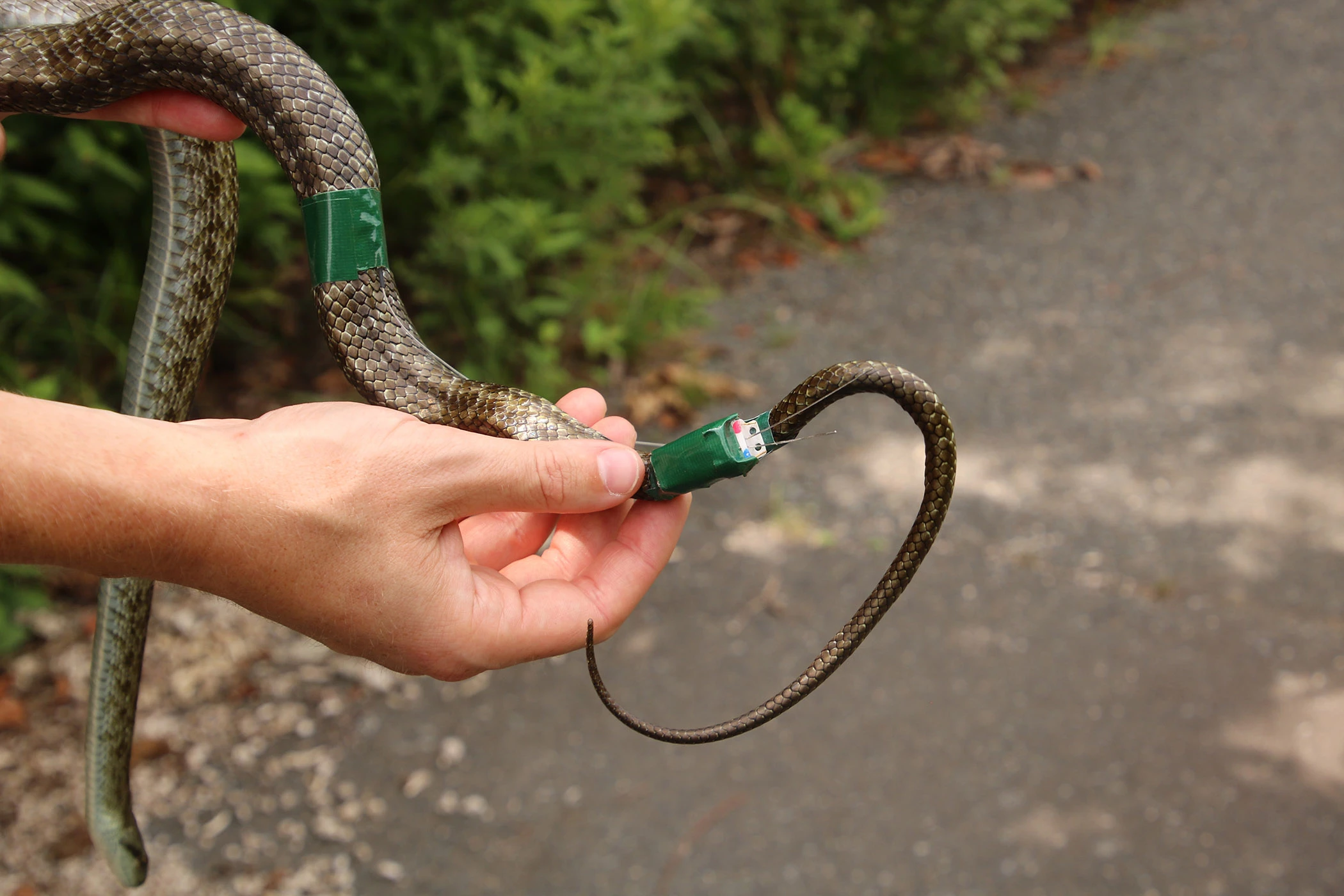As work continues to clean up the mess left by the meltdown of Fukushima Daiichi Nuclear Power Plant in 2011, scientists are enlisting some local help in their efforts to survey the damage. A study has shown how snakes living in the Exclusion Zone can be serve as living, breathing monitors of radiation levels in the area, with the help of GPS and VHF tags.
The idea of using snakes to track radiation levels around Fukushima came from a group of researchers at the University of Georgia, who were drawn to a certain species for a few key reasons. The rat snake is an abundant species in Japan, typically traveling short distances and tends to accumulate high levels of radionuclides. This limited range of mobility, constant close contact with the soil and tendency to absorb radioactive material make them a useful "bioindicator" of residual contamination in the area.
“Snakes are good indicators of environmental contamination because they spend a lot of time in and on soil,” says study author James C. Beasley. “They have small home ranges and are major predators in most ecosystems, and they’re often relatively long-lived species.”
The team captured nine rat snakes and applied tape around their bodies, using superglue to then attach the GPS and VHF transmitters on top, allowing them to be easily removed afterwards. The animals were tracked as they slithered throughout the Exclusion Zone, though most didn't move far, with each moving an average of just 65 m (213 ft) a day.

The scientists identified 1,718 different locations in total as they tracked the snakes for over a month. Their analysis showed that the rat snakes could act as useful bioindicators of contamination, as they found a strong correlation between levels of radiocesium in the creatures and levels of radiation in the patches of soil that they frequented.
“Our results indicate that animal behavior has a large impact on radiation exposure and contaminant accumulation,” says study author Hanna Gerke. “Studying how specific animals use contaminated landscapes helps increase our understanding of the environmental impacts of huge nuclear accidents such as Fukushima and Chernobyl.”
The research was published in the journal Ichthyology & Herpetology.
Source: University of Georgia





